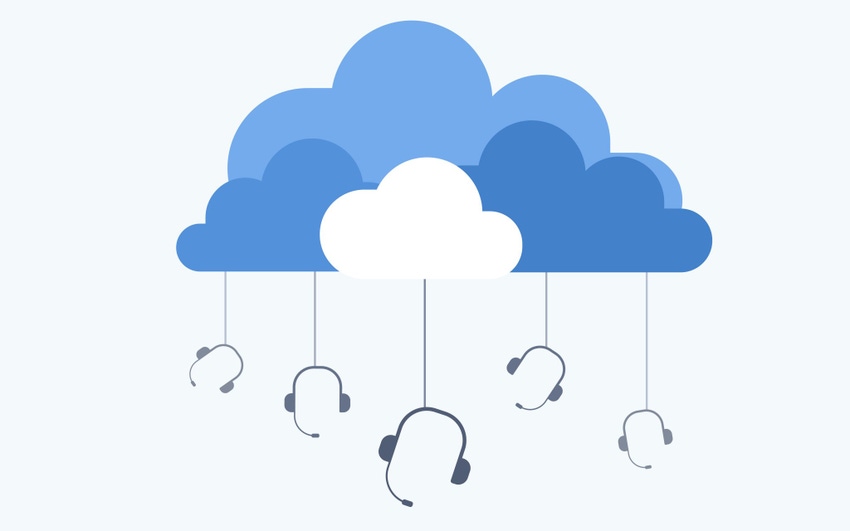CCaaS is evolving to account for the needs of the newest generation of customers.

Ideally, a client’s contact center is a single point of success, where end customers feel heard and valued.
The contact center is often the only interaction end customers will have with an organization, so there’s no room for shortcomings. A panel of experts are preparing to discuss how to select a contact-center-as-a-service (CCaaS) supplier, implementation lessons learned, and how to make sure agents have the right tools and data from day one.
They will share advice in their presentation, “Strategies for Success in CCaaS,” April 10, part of the revenue and supplier portfolio conference track, sponsored by Nextiva, at the Channel Partners Conference & Expo in Las Vegas.
Channel Partners spoke to the panelists: Brandon Knight, cloud evangelist at Intelisys, a ScanSource company; Bill Pieper, president of Epic Connections; and Joe Rice, managing director of Acliviti. Blair Pleasant, president and principal analyst at CommFusion, is moderating the session.

Intelisys’ Brandon Knight
In a Q&A, the panelists gave a sneak peek of the information they plan to share during the session.
Channel Partners: How is CCaaS evolving and what are some of the most in-demand features?
Brandon Knight: CCaaS is evolving to account for the needs of the newest generation of customers. While voice is still the primary method of contact, there has been a significant increase in webchat and text messaging across various business types. In addition, the importance of the customer experience has seem to hit the industry as a whole in a very big way. Customers have come out in a huge way and said that being easy to do business with is the single biggest factor to loyalty/retention. Subsequently, progressive companies are looking as much at their operational processes as they are the supporting technology.
Join these folks and 100+ other industry-leading speakers at the Channel Partners Conference & Expo, April 9-12, in Las Vegas. Register now! |
Bill Pieper: Self-service and automation using artificial intelligence (AI) and machine-learning tools, globalization using a common platform [and] at-home agent deployment.
Joe Rice: As the challengers (like a Talkdesk) and leaders (like an inContact) are built on microservices, we believe the pace of change and features will continue to compound in a way that is creating healthy competition from the vendor market for feature enhancement, as the road maps can be improved much faster. The common interesting features people are interested in being educated about are AI and self service, robotic process automation (RPA) [and] alternative channels. When we dig a little deeper, we often find clients are interested in those because attaching “sexy tech” as a part of the case to move the automatic call distribution (ACD)/interactive voice response (IVR) to the cloud is something that will increase interest and support.

Epic Connections’ Bill Pieper
The competition is great for product features, but it’s creating confusion for complex enterprise clients in a way that many of the vendors look and feel the same. The answers to “Can you integrate with XaaS (Salesforce, case management, or other third-party tools)?” are mostly “yes” from everyone — but that doesn’t mean they’re all equal in being able to deliver the outcomes that clients may be expecting.
CP: How do you go about selecting a CCaaS supplier? Are there do’s and don’ts in the process?
BK: Successfully doing this incorporates the old motto “measure twice — cut once.” The real key to selecting the right CCaaS supplier for your business is clearly identifying and quantifying what …
… your specific company needs are in relation to how your customers want to do business. Maximize that by applying some operational efficiencies where needed. Then apply automation that augments that process. Do all the homework up front. Ask all the right questions and document what success looks like. Don’t be in a rush and don’t settle for the right now without a scaling plan for your future.
BP: The critical step in the process is defining and documenting business requirements so that all suppliers are proposing solutions that address each requirement. Creating a scorecard that can be used in the evaluation makes the process objective rather that subjective. Using an independent third party in this process allows for best practices and industry standards to be incorporated in this selection process.

Acliviti’s Joe Rice
JR: We think there is a lot of focus on the technology features, but often not enough time really understanding the business and enterprise requirements. We encourage and qualify our clients based on their mindset when it comes to building and understanding what the requirements are in 2019. If they are looking at the evaluation as a “lift and shift” because they’re trying to avoid a forced upgrade or maintenance renewal, it’s a red flag for us that there isn’t good organizational alignment, which always slows down and delays decisions. It’s still possible to make a decision from a traditional IT “lift and shift” standpoint, but it’s nearly always putting the implementation in a poor position to succeed. We also advise our clients to weigh the vendor sales and account-management approach heavily as the relationship will be fluid over time with the pace of feature changes.
CP: What are some things to keep in mind during the implementation process to ensure success?
BK: Be nimble. Expect something to go wrong and have a contingency plan for business continuity. Do a modular/phase implementation. Never rip and replace. Above all, ensure that someone owns the process. While selecting the right software is a consensus decision among many stakeholders, overseeing the implementation and coordination of the various parties involved in professional services needs to be one person’s job on the customer side.
BP: The organization must assign an internal project manager, with project management skills, to insure the supplier is implementing the platform to meet timelines, milestones and each of the business requirements. This avoids the supplier facilitating a “lift and shift” implementation from the previous platform, thus transferring existing deficiencies to the new platform.
JR: Early engagement with the cross-functional team and business users is key to ensure the expectations of level of effort, timeline and requirements are aligned. We’re also seeing a lack of understanding on roles and responsibilities on the client side after the implementation is complete, which is something to really drive clarity on.
CP: What do you hope attendees learn and can make use of from this session?
BK: Practical knowledge nuggets. We will be sharing the good and the bad from actual projects and implementations. Hopefully they leave with a practical do’s and don’ts list based on our collective experience.
BP: While there is no one-size-fits-all CCaaS solution, the key to a successful technology transformation requires expertly combining the three pillars of contact center success: people, processes and technology.
JR: That there is a large opportunity to drive value for clients through selling CCaaS, but that the process is different than most traditional agent brokerage.
Read more about:
AgentsAbout the Author(s)
You May Also Like


